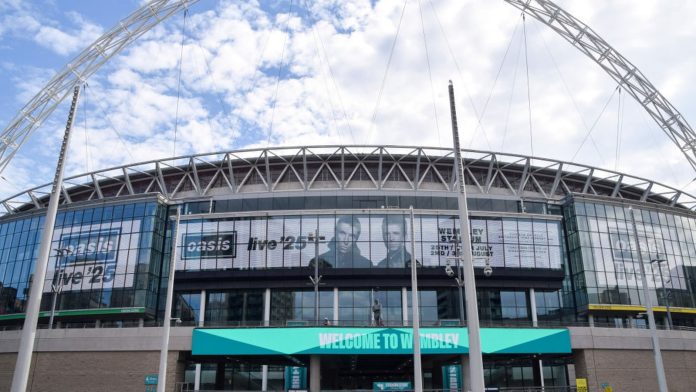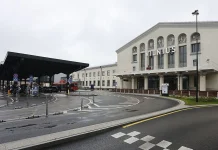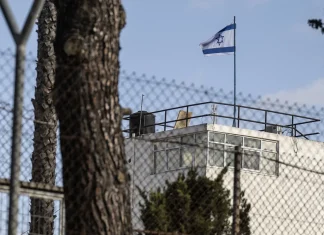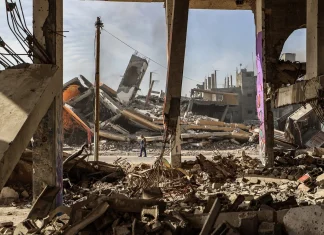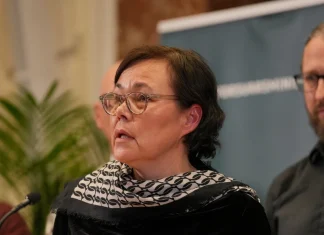A Night of Music, Tragedy, and Reflection at Wembley Stadium
Wembley Stadium, the legendary arena that has witnessed countless moments of joy, unity, and euphoria over the decades, found itself shrouded in somber silence on the evening of August 2.
The night was set to celebrate one of Britain’s most iconic bands, Oasis, whose anthems have soundtracked generations and stirred emotions across the globe. But the euphoria was cut short by a heartbreaking incident—a man in his 40s tragically died after a fall during the electrifying concert.
The vibrant stadium, packed with devoted fans eager to sing along to classics like “Wonderwall” or “Don’t Look Back in Anger,” suddenly became a scene of grim reality. At precisely 10:19 pm, according to the Metropolitan Police, emergency responders were dispatched following reports of a person injured within the bustling crowd.
Despite swift medical intervention from venue medics and the London Ambulance Service, the man was pronounced dead at the scene. His injuries, described as consistent with a fall, raised immediate questions and concerns amid the sea of concertgoers.
Inside the Crowd: Moments Frozen in Time
To stand among tens of thousands at Wembley is a unique experience. The air buzzes with anticipation, the collective heartbeat syncing with every chorus. It’s a shared ritual—a communion of voices joined in song, where strangers become one family. It is also an environment where safety and vigilance become quietly paramount, often unnoticed until a tragedy jolts the ambiance.
“I was right by the barrier, just soaking it all in,” recounted Rachel Hughes, a 28-year-old graphic designer from East London. “One moment, I was singing my heart out, and then suddenly, I saw the crowd part and heard the commotion. It was chilling. It reminds you how fragile life is, even in our happiest moments.”
As is common in such incidents, many attendees may have captured the moments leading to or following the fall on their mobile phones—both candid and accidental documentation that might hold clues and answers. The police have appealed to these witnesses, urging anyone with information or video footage to come forward, underscoring the importance of community cooperation in constructing a clear narrative.
Safety in Mass Gatherings: A Global Challenge
The tragedy at Wembley underscores a worldwide concern about safety at large-scale events. From music festivals to sports, the logistical challenges of securing tens of thousands under pulsating lights and booming sound present serious risks. According to the Bureau of Justice Statistics, medical emergencies occur in approximately 0.25% of large public gatherings—a small number but one that translates to a significant volume when events routinely draw crowds exceeding 50,000.
Health and safety expert Dr. Lena Rodriguez reflects, “Crowded events are a balancing act between delivering an unforgettable experience and managing unpredictable human behavior. Stumbles, falls, and injuries, sadly, are an inherent risk, but we constantly strive to mitigate these through training, layout planning, and rapid response teams.”
In the UK, after past incidents like the 2010 Love Parade tragedy in Germany and the 1989 Hillsborough disaster, event organizers and authorities have tightened protocols. Yet, as Wembley shows, even the best precautions cannot always prevent every accident.
A Community in Mourning: More Than a Statistic
Behind every headline and police report lies a deeply personal story—a family now grappling with loss, friends searching for solace, and a community stunned. “It’s easy to become numb to statistics, to hear ‘a man died at a concert’ and move on,” said journalist and concert enthusiast Marcus Allen. “But this is someone’s father, brother, friend. It ripples through networks of love and care, reminding us why we must honor every life, especially when taken prematurely.”
Among Oasis fans, the news cast a shadow over an otherwise celebratory reunion. The band’s music has always been about connection—about bridging divides and expressing the intensity of human emotion. In a moment so emblematic of collective joy, the stark contrast of loss is especially jarring.
Looking Forward: What Can Be Learned?
What lessons might emerge from this tragedy? For one, the incident calls renewed focus to crowd management and the role of bystanders. How prepared are audiences for emergencies? How effective is communication across thousands of ears amid booming decibels? And how can empathy translate into action without pandering to fear?
As director of Live Events Safety, Tom Carver, asserts, “We need to enhance training programs not only for staff but also to empower the public to be vigilant—not to scare them, but to make safety a shared responsibility. Simple awareness, quick reporting, and calm reactions can save lives.”
Events like this prompt us to reflect more broadly on the human experience in shared spaces—places where we seek joy, escape, and camaraderie. How do we reconcile the euphoria of such gatherings with the awareness of their inherent risks? Perhaps it is a reminder to cherish each moment—whether under stadium lights or in everyday life—with care and respect for ourselves and those around us.
Dear readers, as you read this and think back to your own moments of communal celebration, what memories surface? What feelings stir when music and crowd converge to create something electric? And how does this tragic incident shape how you view the spaces where life’s peaks and valleys meet?
In the echo of those questions, the stadium’s roar—both joyous and mournful—lingers. Wembley has seen it all before, and it will see it again. But tonight, beneath its vast arches, a quiet vigil holds space for a life lost too soon, and for the enduring power of music to unite us even in sorrow.


